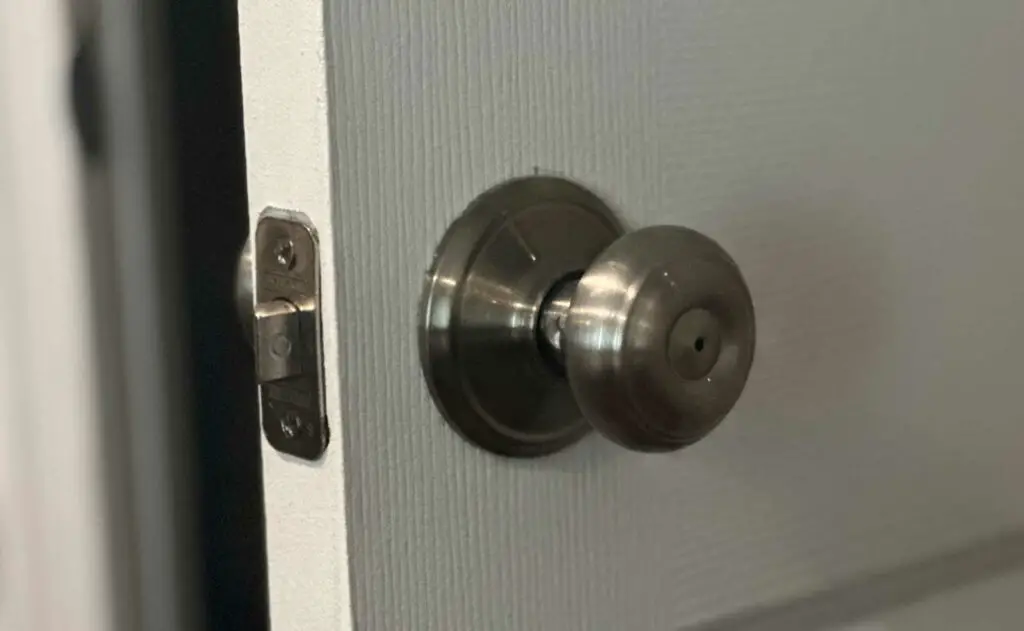Door handles are meant to provide effortless access to our homes and offices, but what happens when one side of the door handle isn’t working? You know the feeling—the frustration that rises when you twist the handle and the door refuses to open. Let’s dive in and explore why this might happen and how to solve the problem.
Remarkably, a faulty door handle is a common issue that can happen to anyone, anytime. As the adage goes, “If something can break, it eventually will.” Door handles consist of various components that, despite their sturdiness, can sometimes fail to function as expected. Our goal is to help you demystify the inner workings of a door handle and get that stubborn door open without hassle.
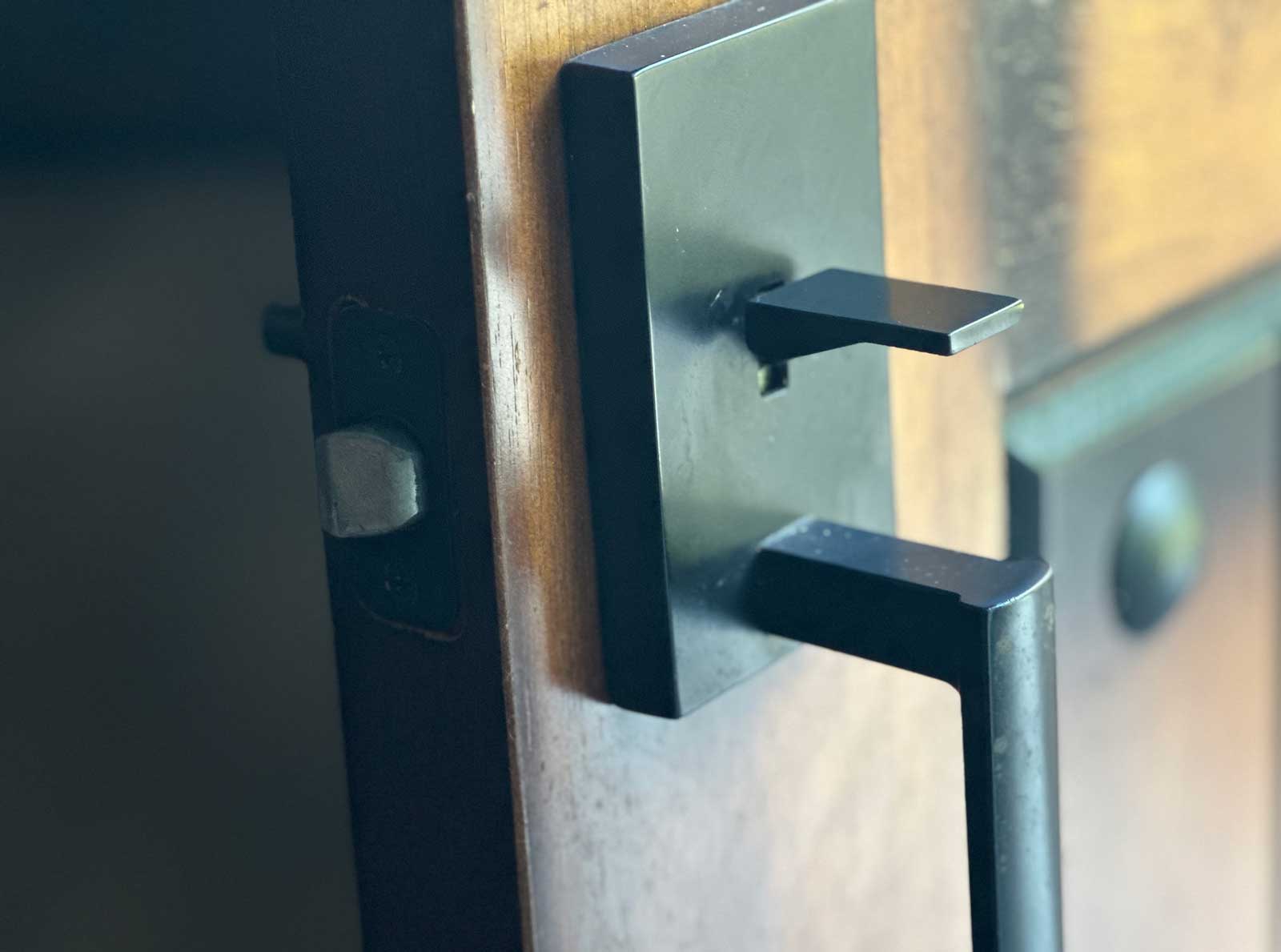
Understanding Door Handle Mechanisms
When it comes to door handles, no one wants to be left hanging (figuratively and literally). In this section, we’ll uncover the inner workings of door handle mechanisms and how they can sometimes malfunction. So, if you’ve ever been puzzled by a door handle that refuses to cooperate, buckle up and get ready for some serious door handle know-how.
Door handle mechanisms consist of several key components, including the door handle (or knob), the spindle, and the lock. These parts work together in a delicate dance to ensure smooth operation of your door. You see, when you turn the handle, it rotates the spindle, which in turn retracts the latch and allows the door to open.
One common issue with handles is a spindle that’s too short. A short spindle can cause the handle to be misaligned with the parts that turn both ways, leading to a door knob that only turns one way. If you suspect this to be the case, grab a tape measure and confirm your spindle’s length is up to the task.
Another problem area to watch out for is the door latch itself. Over time, these metallic masters of security might get stubborn and stiff, leading to an uncooperative door handle. A bit of grease and a dose of TLC (Tender Latch Care) might just be the perfect recipe to bring it back to life.
Between you and me, I once spent a whole weekend trying to solve a door handle conundrum. My trusted tool kit and I braved the wilds of online tutorials, only to realize it was a simple misalignment issue. Armed with newfound knowledge, I adjusted the handle assembly and triumphantly tackled the final boss—the operation of the door with graceful ease.
So, dear reader, as you navigate the fascinating world of door handle mechanisms, remember to consider all key components in your quest for a functional and friendly door. Keep your spindle long, your latch well-lubricated, and your handle’s path clear. Together, we’ll conquer uncooperative doors and create welcoming entryways from sea to shining sea.
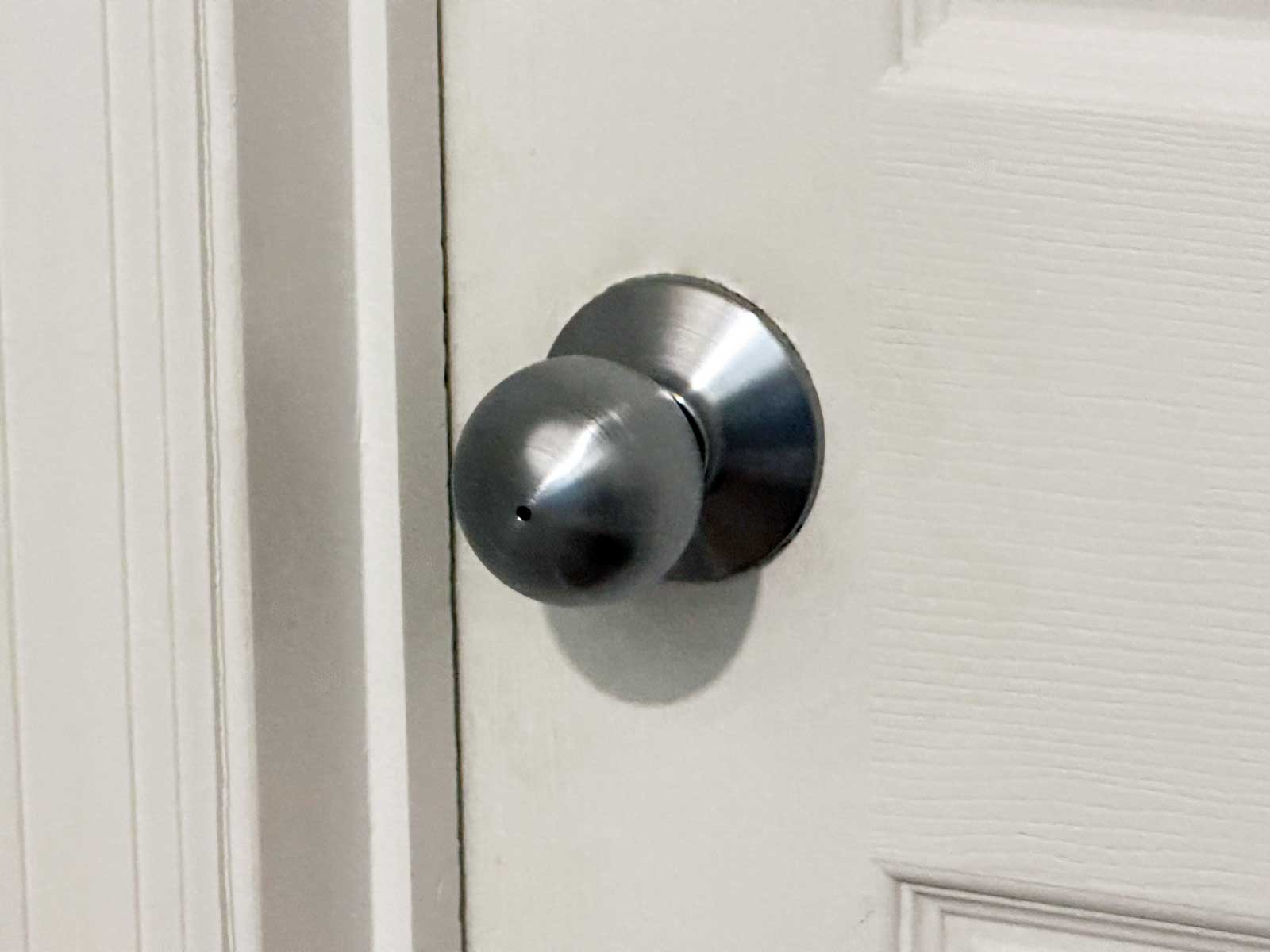
Common Issues with Door Handles
You may have experienced that frustrating moment where your door handle fails you, leaving you wondering what the problem is. In this section, we’ll tackle the most common door handle issues you’ll face and provide solutions, so you’ll never be left scratching your head again.
Misaligned Latch
Signs of trouble: Your door won’t close smoothly, or the latch won’t catch.
Your door’s latch and strike plate may be misaligned, causing the door to fail to close properly. To fix this issue, you can try readjusting the strike plate position or adding some padding to the door stopper. If these quick fixes don’t work, you may need to replace the latch system entirely. Remember, a little patience and know-how can unjam any door situation!
Jammed Spindle
Familiar scene: The door handle moves, but the latch doesn’t.
A jammed spindle can be the culprit here. The spindle connects the inside and outside handles, allowing the mechanism to function. For a DIY fix, remove the door handle and check if the spindle is in good shape. If it’s bent, damaged, or corroded, it’s time to replace the spindle. We’ve all been there: thinking it’s the door handle’s fault when it’s actually the spindle playing tricks on us.
Loose Set Screw
The giveaway: Your door handle wobbles or won’t turn.
A loose set screw may be the reason behind your door handle woes. This small but mighty screw holds the handle in place on the spindle. Grab a screwdriver and gently tighten the set screw to secure the handle back in place. Be careful not to overtighten, as this may cause damage to the spindle or handle. Trust me, I once overtightened my set screw, and I had a door handle-less weekend while waiting for a replacement.
In addressing these common door handle issues, remember that it’s crucial to maintain your door hardware. Regular checks can prevent potential problems, saving you time and frustration. So, the next time you encounter a stubborn door, you’ll be armed with the knowledge to fix it efficiently!
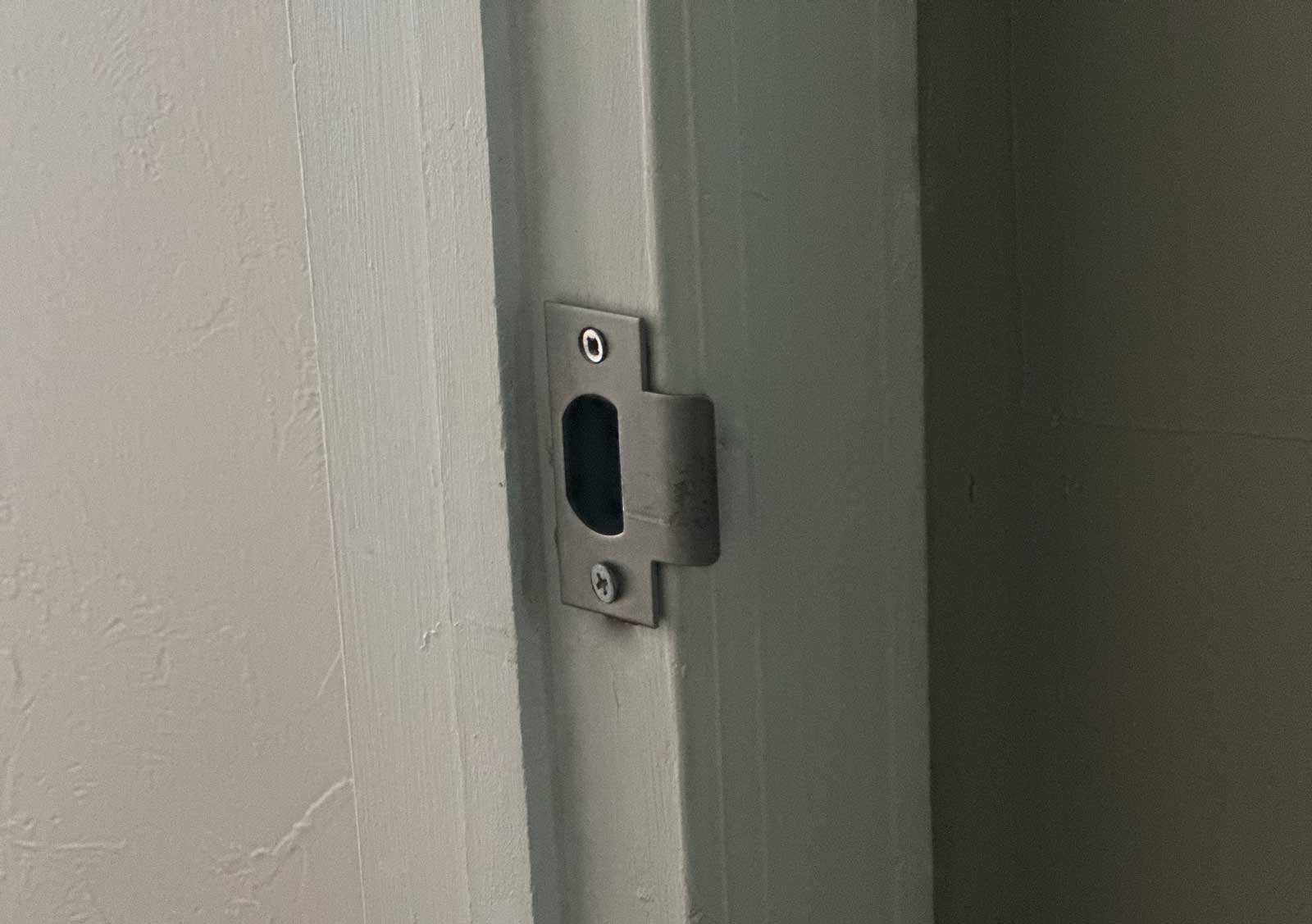
Troubleshooting Door Handle Problems
You’ve got a door handle that just won’t behave, and you’re not sure what to do about it. Don’t worry, we’ve got you covered. In this guide, we’ll walk you through the essential steps to troubleshoot your uncooperative door handle. So, roll up your sleeves, and let’s dive in!
Checking Door Locks and Latches
First things first, we need to inspect the door locks and latches. A faulty door latch could be the culprit behind your stubborn handle (remember that time when my bedroom door got locked, and I couldn’t get in? Not fun!). So here’s what you need to do:
- Open the door and examine the latch mechanism.
- Make sure the latch is moving freely and is properly aligned with the strike plate.
- If the latch appears to be misaligned, adjust the strike plate by loosening its screws and moving it slightly up, down, or sideways.
(Pro Tip: Don’t forget to check your keyhole for any obstruction or damage!)
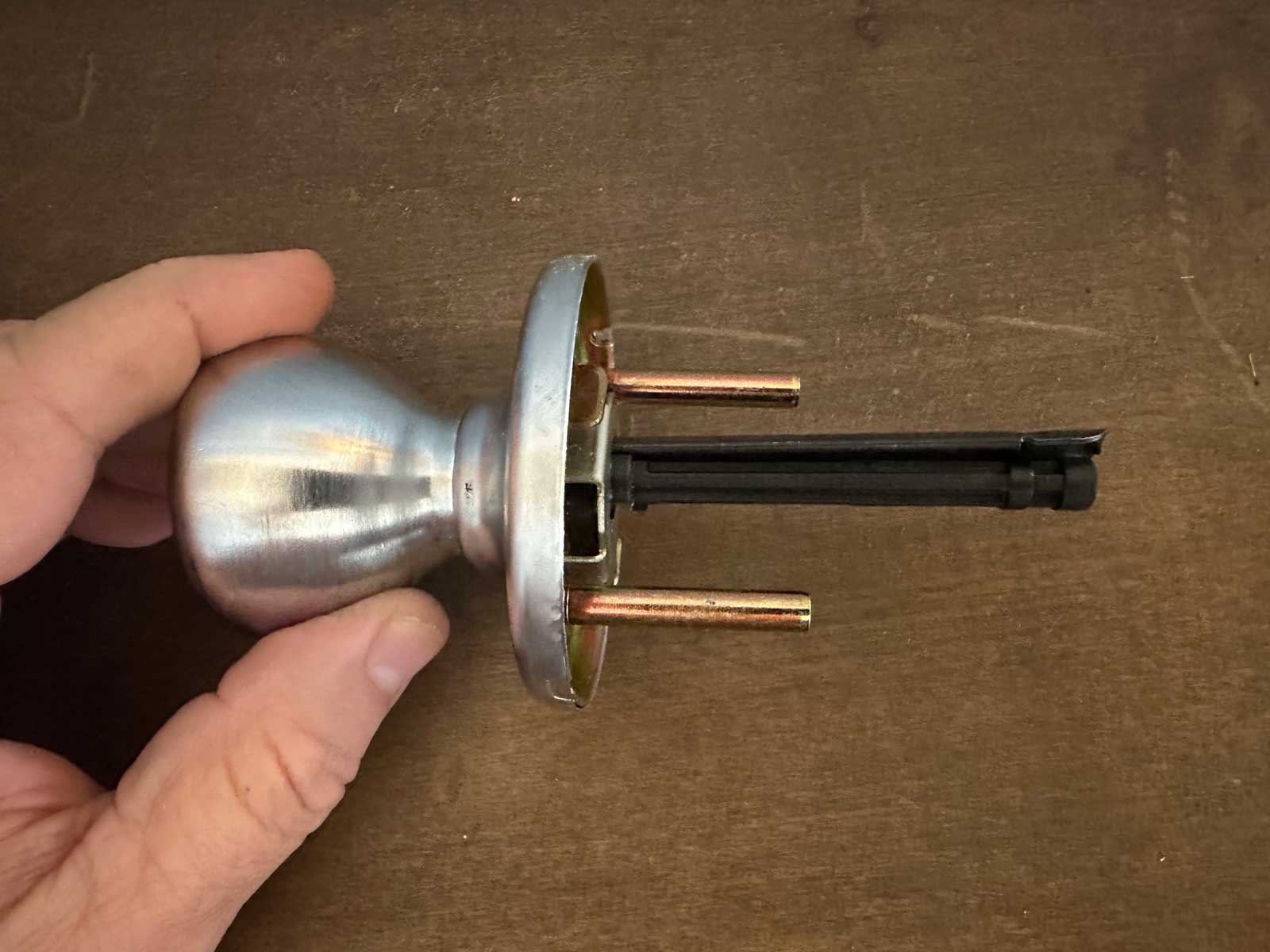
Examination of the Handle Assembly
Now that we’ve checked the locks and latches, it’s time to level up and head straight for the handle assembly.
- Remove your door handle from the door. Usually, this involves unscrewing a couple of screws or using an Allen wrench to release the handle.
- Inspect the internal components of the handle assembly. Look for any signs of wear and tear on the spindle, springs, and other components (think Indiana Jones, but a bit less dusty).
- If you spot any damage or broken parts, you may need to replace your handle assembly. But hey, at least you know what’s causing the problem!
(And before you ask, no, duct tape is not a viable solution here.)
Testing the Mechanism Operation
Finally, it’s time to put all the pieces back together and test the mechanism operation to see if you’ve struck gold (or, you know, a functional door handle).
- Reassemble the handle assembly and mount it back onto your door.
- Open and close the door multiple times, making sure the handle feels smooth and works consistently.
- Check both sides of the door handle to ensure they’re equally cooperative (it’s always wise to play it safe!).
(Pro Tip: Apply some lubricant to the latch and internal parts of the handle assembly for a smoother operation.)
And there you have it! Armed with these expert troubleshooting tips, you’re now more than ready to tackle any door handle issue that comes your way. Just remember: confidence, a keen eye, and a willingness to get your hands dirty are all you need to conquer those pesky door handle problems. Good luck!
Fixing Door Handle Issues
When facing the frustrating problem of a one-sided door handle not working, you might feel like it’s time to call in a professional. But, fear not! We have your back with a straightforward and professional guide on how to tackle this issue head-on. Follow these simple steps and you’ll have your door functioning like new in no time! (side note: we promise, no puns).
Applying Lubrication
You may not realize it, but a little lubrication can go a long way in solving door handle issues. Over time, dust and debris can accumulate in the door mechanism, causing it to stick or jam. To restore smooth operation, simply apply a silicon spray to the internal parts of the handle. This should help loosen up any potential blockages and have your door handle working like a champ again. Remember, a well-lubricated door handle is a happy door handle!
Compressing the Mechanism
Sometimes, a door handle issue may be caused by a misaligned or jammed mechanism. To fix this, try compressing the mechanism by applying pressure to both sides of the handle with your hands. This can help realign any misaligned parts, ensuring proper function.
Make sure your door is unlocked before attempting this technique; otherwise, you may accidentally lock yourself out! Trust me, as someone who was once stuck outside their house in freezing weather, you don’t want this to happen.
Disassembling the Door Handle
If lubrication and compression don’t do the trick, it’s time to roll up your sleeves and disassemble the door handle. First, ensure that you properly search for guidance on how to repair a faulty door handle latch. By following the step-by-step instructions, you’ll have a deeper understanding of your door handle’s inner workings.
As you work, keep track of the various components in an organized manner. This will make reassembling the handle much easier once you’ve identified and addressed the issue. Remember, the key to successfully disassembling and reassembling your door handle is staying organized and focused!
So, there you have it! The keys (no pun intended) to fixing your one-sided door handle issue are a healthy dose of lubrication, some quick compressions, and, if needed, disassembling the handle like a pro. Good luck, and may the odds be ever in your favor as you conquer the door handle beast!
Dealing with Different Door Handles
When one side of your door handle isn’t working, it can be both frustrating and puzzling. Fear not, as this guide will help you navigate the world of door handles like a pro. With a few simple tips, you’ll know how to handle any situation like a boss (pun not intended).
Understanding Door Handle Levers
Door handles come in various designs, but levers are one of the most common types. Easier to use than traditional doorknobs, these sleek and modern options are perfect for those who want to maintain a sense of style while ensuring top-notch functionality. But what happens when one side of the lever isn’t working?
Like any mechanical device, door handle levers can wear out and break over time. In some cases, a loose internal mechanism may cause only one side to become unresponsive. Before you panic and call a locksmith, try (gasp) DIY-ing a quick repair. Grab your trusty screwdriver, locate the release button, and see if you can fix the issue yourself. You might just be the hero your home deserves.
When to Consider a Motorized Lock
Let’s say you’ve tried to repair your door handle lever to no avail. Or maybe you’re just ready for a change because, well, it’s 2023 and we’re practically living in the future.
In cases like these, it might be time to upgrade to a motorized lock. Installing an automated locking system provides you with both convenience and security. Gone are the days of fumbling for your keys in the dark or forgetting to lock the door behind you. With a motorized lock, you can enjoy peace of mind (and maybe even feel a little like James Bond).
Switching to a motorized lock can also solve problems with unresponsive door handles. In fact, I remember installing a smart lock on my own front door when I experienced a similar issue. Not only did it resolve the problem, but it also gave me the convenience of remotely locking and unlocking my door with ease. Talk about a win-win situation!
So when your door handle seems to have a mind of its own, don’t fret. By understanding the mechanics behind levers and considering a motorized solution, you’ll take control of your home security and never have to worry about being left out in the cold—or locked out of your home—again.
Using Tools for Door Handle Repair
Picture this: You’ve just returned home after a long day, ready to relax and unwind. You grab the door handle, turn it, but it refuses to budge! Has this ever happened to you? It might be a good time to consider repairing your door handle, ensuring you never face this inconvenience again. In this section, we’ll go over the essential tools and techniques to help restore your door to its former glory.
Meet the humble yet mighty flathead screwdriver – your best friend in fixing a malfunctioning door handle. With this versatile tool by your side, you’ll be able to tackle any door handle repair in no time. (And you thought it was only for changing batteries in your remote!)
First Impressions Matter – Begin by removing the handle, as access to the latch mechanism is crucial for a successful repair. To do this, locate the release tab or button on the inside of the doorknob and use your flathead screwdriver to push it in while simultaneously pulling the handle off. It’s as easy as pie! (Or should I say, a piece of cake?)
Now that you’ve gained access to the latch, it’s time to put your detective hat on. Inspect the latch for any visible signs of damage or wear. In some cases, the issue could simply be a loose component that may require a quick tightening. Just grab your trusty flathead and twist that screw until everything is snug as a bug in a rug.
However, if your problem lies within the door’s mechanism, you’ll need a step-by-step guide on how to fix a faulty door handle latch. This tutorial will walk you through the ins and outs of repairing a broken door handle caused by a faulty latch. Armed with your flathead screwdriver and newfound knowledge, there’s no door handle issue you can’t conquer.
Prevention is Key – To avoid future door handle troubles, consider giving your door and handle a regular maintenance check. It’s a great way to spot any potential problems early, ensuring you won’t get locked out in the cold again. Remember, a well-maintained door handle isn’t just about aesthetics—it’s about security and functionality as well.
So there you have it! With just a flathead screwdriver and the right information, fixing a stubborn door handle is a breeze. A little effort now can save you a lot of frustration in the future.
Next Steps
Want to join others who are creating the most amazing home redesigns & renovations and get more tips, tricks and hacks on how to make your home the best it can be?
Join my brand new free private Facebook group, Remodel Reality to connect with other people like you to make your space the best!
